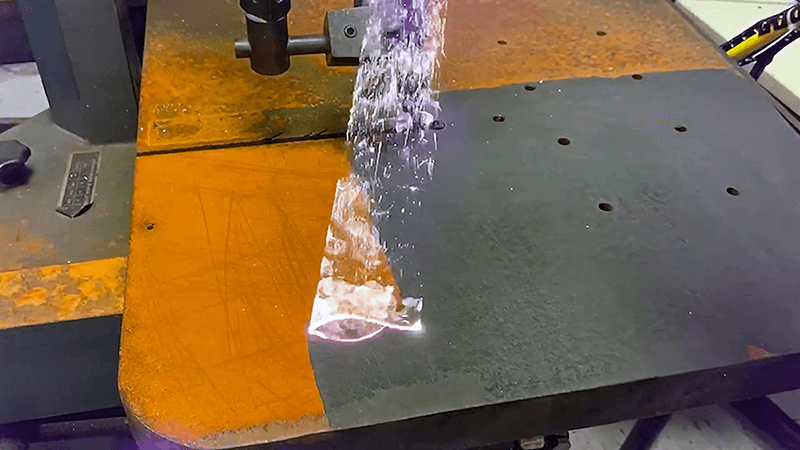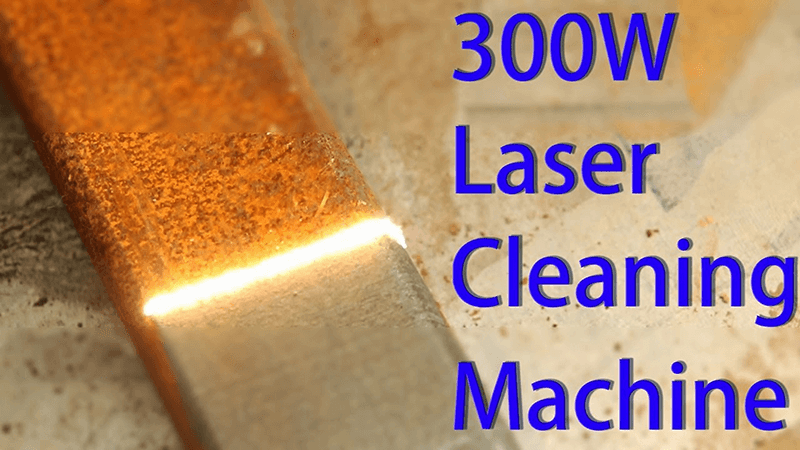When old coatings, rust, and grime slow your production, it creates frustration and lost profit. Many companies waste time on harsh chemicals and abrasive methods that damage parts.
The best handheld pulsed fiber laser cleaning machine is the one that matches your material, contamination type, and workflow, offering precise cleaning without damage.
Traditional cleaning methods like sandblasting and chemical stripping can harm your products and create safety hazards. A laser cleaning machine solves these issues, but choosing the right one can feel overwhelming. Below, I will share how I guide clients through this process.

How do I choose a laser cleaning machine?
When faced with many models, features, and technical terms, the process can be confusing. I see companies buy high-powered lasers thinking more power equals better cleaning, only to discover surface damage and wasted energy.
To choose a laser cleaning machine, focus on material type, contamination layer thickness, precision requirements, and operator workflow before looking at power or speed.
Key factors to consider
The right decision starts with understanding what exactly you are cleaning. At Kirin Laser, I always begin by asking my clients these questions:
| Factor | Why it Matters | Example Question to Ask Yourself |
|---|---|---|
| Material type1 | Different metals absorb laser energy differently | Is it aluminum, stainless steel, or brass? |
| Contamination type2 | Determines pulse width and energy needed | Are you removing paint, rust, or grease? |
| Thickness of layer | Impacts required frequency and scan speed | Is the rust light surface or deep corrosion? |
| Precision needed | Avoids damage to fine features | Are there delicate parts or tight tolerances? |
| Production environment | Affects size, cooling, and portability needs | Will you clean on-site or in a workshop? |
When I worked with a parts refurbisher, they struggled with chemical stripping that damaged aluminum castings. Sandblasting eroded fine details. By carefully analyzing their parts and contaminants, we supplied a handheld pulsed fiber laser machine tuned to their needs. This eliminated warping, removed rust and paint quickly, and cut cleanup time in half.
The lesson is simple: start with your process, not the machine specs.

What size laser cleaner do I need?
Choosing the wrong size can waste money or limit performance. Too small, and you spend hours cleaning; too large, and you risk overkill and damaged parts.
The size of your laser cleaner depends on the surface area, frequency of cleaning tasks, and the environment where it will be used.
Matching machine size to your needs
At Kirin Laser, we offer portable handheld units3 and larger cabinet-style systems. Here’s how I guide customers:
| Workload Type | Recommended Size | Example Applications |
|---|---|---|
| Light-duty, occasional | 100W–200W handheld | Small workshops, tools, art pieces |
| Medium-duty, regular use | 300W–500W portable system | Automotive repair, industrial parts |
| Heavy-duty, continuous | 1000W+ high-capacity system | Shipyards, railways, large-scale cleaning |
I once worked with a client in automotive restoration. They initially wanted a 1000W system4 because they assumed bigger was better. After discussing their actual workload—small parts, tight spaces, delicate components—they realized a 300W handheld was ideal. It offered mobility, precision, and cost savings.
The key is to align machine size with your cleaning tasks, not just purchase the largest unit available.

Which is better, pulse or continuous flow?
Many buyers are confused about pulsed versus continuous wave (CW) lasers. They often ask me if continuous wave is faster and therefore better.
Pulsed lasers are ideal for selective, precise cleaning without damaging the base material, while continuous wave lasers suit bulk removal when precision is not critical.
Comparing the two technologies
| Feature | Pulsed Fiber Laser5 | Continuous Wave Laser6 |
|---|---|---|
| Heat Control | Excellent, low heat input | Higher heat, risk of warping |
| Precision | Very high, adjustable pulse width | Lower precision |
| Best for | Paint, rust on delicate metals | Thick layers, heavy industrial work |
| Energy Efficiency | High | Moderate to high |
| Cost | Typically higher | Usually lower |
For delicate work, like removing paint from thin aluminum panels, a pulsed system is superior. It lets you control the pulse energy, frequency, and duration. This means you can remove unwanted layers without affecting the underlying metal.
One of my clients ran a refurbishing shop for aerospace parts. They used sandblasting and CW lasers before switching to a pulsed unit from us. The result was cleaner parts, no distortion, and a significant reduction in rejects.
If your goal is precision and protection, pulsed is the way to go.

What power do you need for laser cleaning machine?
Power levels confuse many buyers. I often hear: "I need the most powerful laser you have." That’s not always true.
The power you need depends on the type of contaminants, the surface area, and the speed requirements of your workflow.
Understanding power levels
At Kirin Laser, we recommend selecting power based on your use case, not just the maximum wattage:
| Power Range | Best For | Example |
|---|---|---|
| 100W–200W | Light-duty, precision cleaning | Jewelry, electronics, art restoration |
| 300W–500W | Medium-duty, general industrial cleaning | Automotive parts, maintenance |
| 1000W+ | Heavy-duty, large-scale cleaning | Ship hulls, railway cars, heavy machinery |
For example, a customer cleaning thin oxide films on stainless steel7 will benefit more from a 200W pulsed system than a 1000W unit. Higher power can overheat and damage the surface, while the correct power setting ensures safe, controlled cleaning.
When we worked with a factory maintaining stainless steel tanks, we recommended a 500W handheld pulsed unit8. It balanced speed and control, allowing workers to clean quickly without risking deformation.
The right power is not just about speed; it’s about safety, efficiency, and long-term equipment value.

Conclusion
Choosing the best handheld pulsed fiber laser cleaning machine9 comes down to understanding your process. Start by identifying your material, contaminants, and workflow. Then match machine type, size, and power to your exact needs. At Kirin Laser, our goal is to help you clean faster, safer, and with higher precision, so your business can grow without waste or damage.
-
Understanding material type is crucial for effective laser cleaning, ensuring optimal results and preventing damage. ↩
-
Knowing the contamination type helps tailor the cleaning process, enhancing efficiency and effectiveness. ↩
-
Explore how portable handheld units can enhance mobility and precision in various applications. ↩
-
Explore how a 1000W system is used in heavy-duty tasks like shipyards and railways, ensuring you choose the right tool for large-scale projects. ↩
-
Explore this link to understand how Pulsed Fiber Lasers excel in precision and heat control, making them ideal for delicate applications. ↩
-
Discover the various industrial applications of Continuous Wave Lasers and how they compare to other technologies. ↩
-
Discover effective techniques to safely clean thin oxide films on stainless steel without causing damage, ensuring optimal results and equipment longevity. ↩
-
Discover how a 500W handheld pulsed unit offers a balance of speed and control, ensuring efficient cleaning without risking damage to surfaces. ↩
-
Find the best laser cleaning machine and laser cleaning solutions from Kirin Laser, clicking this link to get all your needs for your business. ↩





